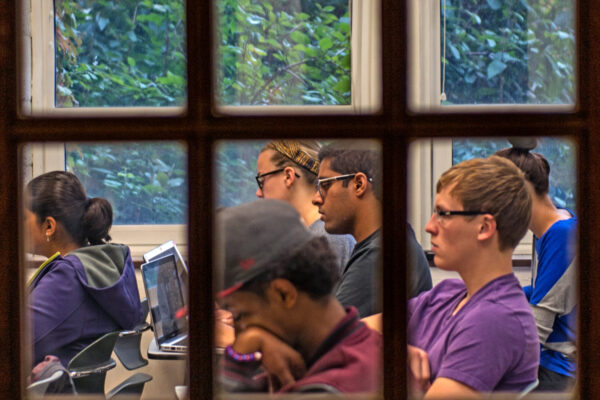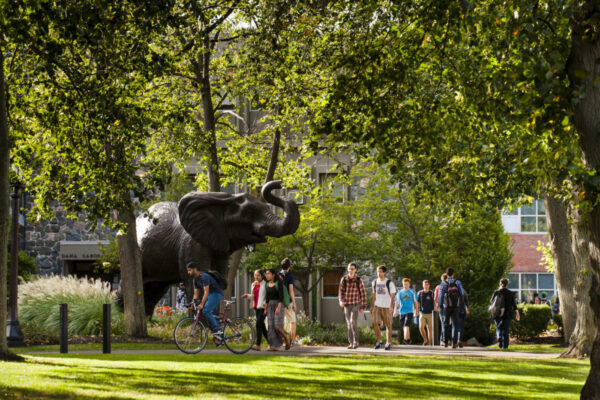Jean McLaughlin discusses five key takeaways on faculty retirement, for both institutions and faculty members themselves. This piece is drawn from the recent book, Faculty Retirement: Best Practices for Navigating the Transition.
Like every other sector of the U.S. workforce, higher education is facing a looming crisis in retirement as baby boomer faculty plan the next chapter of their lives.
Faculty want help in making decisions about these key transitions, but they don’t know what kind of assistance they want, nor do they know what kind of help is already available.
Recognizing the need for guidance and information in this area, ACE set out to determine best practices that institutions were using to support these faculty as they transition to retirement. Over the last few years, we have conducted institutional site visits, held a best practices competition, and hosted several conferences to gather, evaluate, and determine what institutions are doing well, and what can be done for faculty to improve the experience.
We have identified five key takeaways for academic administrators dealing with the aging academic workforce, and for faculty members contemplating retirement:
1. The aging workforce is here to stay
“Academic institutions employ a disproportionally higher percentage of persons age 55 and older…” — (Kaskie, Leicht, and Hitlin, 2012)
Although higher education’s seven-year exemption from the national ban on age-based mandatory retirement ended in 1994, only recently has the significance of the baby boomer faculty cohort moving through the senior stages of their career been an issue for academic administrators. With 10,000 baby boomers reaching age 65 every day (Pew Research, 2010), higher education may be the vanguard of the aging workforce. But are we ready to respond to the challenges and opportunities that these demographic changes entail?
2. Consider the associated legal rights and responsibilities
“We need fresh blood.”
Almost every institution we visited voiced concern over how to reach out to faculty without suggesting they were pushing them out or targeting specific age groups. Faculty, on the other hand, sometimes felt that administrators were looking for “fresh blood” and eliminating “legacy” faculty. As a result, ACE, in conjunction with external legal counsel, created a legal issues brief that institutions can review when exploring or improving faculty retirement communications and policies. The brief gives examples of language not to use, while suggesting how institutions can still communicate in a coherent and sensitive fashion with their campus communities.
This brief describes concepts like “safe harbor” and “one bite at the apple” and discusses how laws like ERISA and age discrimination can impact what administrators can do on their campuses. All institutions are encouraged to check with their legal counsel and other state and federal agencies to determine the most current set of guidelines with which they must comply.
3. Take into account the psycho-social concerns of retirement
“I know who I am today. Who will I be tomorrow?”
For many faculty, leaving their day job would present a severe loss to their sense of self. We found many institutions that acknowledge this link between work and identity for members of their academic community. Mt. Holyoke College (MA) addresses the age-related aspects of retirement by drawing on several human developmental theories to justify the types of financial and administrative support they provide to senior and retired faculty. Bentley University (MA) instituted a new phasing program, which can be used for up to 3 years, that allows faculty members the time to decompress and adjust to a new rhythm of life.
San José State University created “Staying Alive”, a program which seeks to rejuvenate faculty stalled at the associate professor level or full professors who are uncertain if they want to stay in academia. Participants in the program can decide to renew their focus, leave for an encore career or transition toward a workload with fewer demands on their time.
4. Communication should be consistent and transparent
“The whole process seems secretive. It is an opaque black box.”
Faculty often told us that they want their institution to communicate more—and more frequently—on what options are available to them as senior faculty and retired or emeriti faculty.
In an open-ended question, we asked what institutions could do to make retirement more manageable and smoother for faculty. The most common suggestion was to improve the communication around retirement, such as discussing retirement options earlier in the faculty lifecycle. Compared to other career milestones, such as applying for tenure (where faculty have clear and written guidelines about what to expect), mid-career and senior faculty often feel they are left to safeguard their own career advancement during the culminating years at an institution. As a result, they feel they are no longer valued or respected.
Even when institutions do provide information about the transition, faculty are still concerned about others getting “deals” or “special offers.” While this may be less of an issue at public institutions, our survey results showed that faculty across all sectors were relatively unaware of what options they did have available to them, or even where to look to locate this information. Sometimes misinformation becomes the norm within a department or college, and then the administration needs to do double the work to re-educate or re-train their employees. This communications gap is complicated by the last item in this list: Where do faculty turn to for help?
Several institutions have created structures to improve communications, such as a departmental listserv for retired faculty or establishing retiree centers or associations. Other campuses focus on cultural components, such as invitations for senior faculty to mentor younger faculty and opportunities to participate in living history projects.
5. HR and academic departments work hand-in-hand on retirement planning
“HR is for staff.”
One common remark we heard frequently is that although Human Resources departments (HR) possess control over many of the transactional aspects of retirement, faculty felt that their department chair, dean or provost were the ones to turn to when thinking about retirement.
However, some HR departments are working hand-in-hand with their chief academic officer on the phase into retirement, which can have a transformational effect on the lives of senior and retired faculty. The George Mason University (VA) worked with the local Fairfax County government to create the Lifetime Leadership Program, which helps develop capacity for nonprofit and civic organizations in the county. At Skidmore College (PA), HR and the dean of faculty came together to start the Retiree Initiative Planning Group to serve the needs of retired faculty and staff. Each institution needs to determine not only what transactional responsibilities each unit has, but also what transformational opportunities can exist when they collaborate.
*****************
With 75 percent of faculty indicating that they’d like to contribute to their discipline or home institution post-retirement, and with people of all generations expected to live longer, issues surrounding an aging academic workforce are likely to continue for the next several decades. Upcoming posts in this series will look in detail at concrete, high-impact practices and policies that other institutions can replicate.
If you have any questions or comments about this blog post, please contact us.


